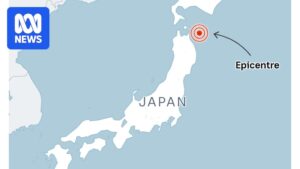
Anemia affects approximately 2 billion people worldwide, representing about a quarter of the global population, according to the Global Alliance for Patient Access (GAfPA). Women are disproportionately affected compared to men, facing significant health challenges that can disrupt daily life and pose serious risks, especially during pregnancy.
From persistent fatigue to heightened pregnancy complications, anemia’s impact on women is profound and often underestimated. Women with chronic conditions such as kidney disease or cardiovascular disease are at an even greater risk. This has prompted global health experts to advocate for a stronger focus on blood health and a more strategic approach to care.
Rethinking Blood Health
In July, a workshop held at the European Parliament brought together health advocates, including GAfPA, to address the urgent need to reduce gender inequities in anemia care. Their message was clear: closing the gender gap in anemia requires coordinated global action.
GAfPA emphasized the importance of expanding Patient Blood Management (PBM) expertise as a critical step forward. Endorsed by the World Health Organization, the PBM approach aims to preserve and safeguard a patient’s own blood while enhancing patient safety and empowerment. It involves education, routine screening, careful management of blood loss during medical procedures, and follow-up care to prevent complications.
CSL, a leader in iron-based therapies and plasma-derived medicines, has shown support for PBM by joining the Blood & Beyond Alliance in December 2024. This collaboration marks a significant step in promoting patient-centered care and improving outcomes for those affected by anemia.
Traditionally, blood transfusions have been the primary treatment for severe anemia cases. However, the PBM approach shifts this narrative, potentially improving patient outcomes, enhancing quality of life, and reducing the burden on healthcare systems.
The Hidden Toll of Anemia
The World Health Organization estimates that nearly one in three women of reproductive age, and more than one in three pregnant women, live with anemia. The consequences of this condition can be severe, including reduced energy levels, heavier menstrual symptoms, complications during pregnancy, weakened immunity, and even heart health issues.
“Anemia affects approximately 2 billion people worldwide, with women significantly more impacted than men.”
GAfPA, which mobilizes physicians and patient advocates, has proposed several recommendations to address these challenges:
- Establishing networks of reference centers to share knowledge and best practices.
- Integrating blood health into national quality-of-care frameworks.
Global Implications and Future Directions
The focus on closing the gender gap in anemia care is not just a health issue but also a matter of social justice. Ensuring equitable access to care and effective treatment options for women can lead to broader societal benefits, including improved workforce participation and economic productivity.
As global leaders and policymakers consider funding initiatives to expand PBM expertise, the potential for transformative change in anemia care becomes more tangible. By prioritizing blood health and adopting innovative approaches, the healthcare community can make significant strides in addressing this pervasive issue.
Looking ahead, the continued collaboration between organizations like GAfPA, healthcare providers, and policymakers will be crucial in driving these efforts forward. The hope is that by closing the gender gap in anemia care, millions of women worldwide will experience improved health outcomes and a better quality of life.





